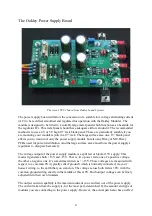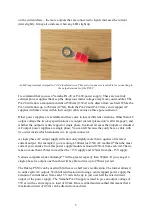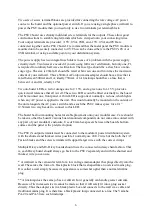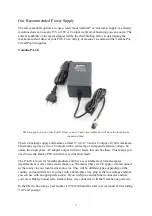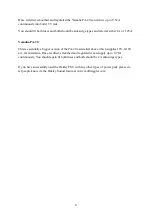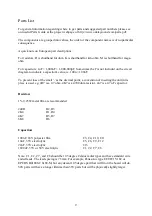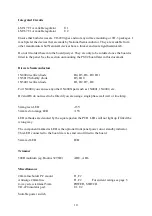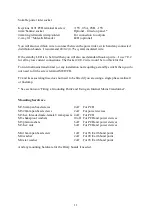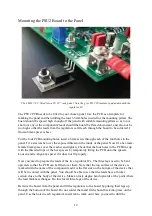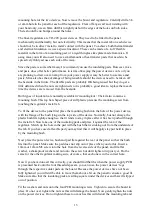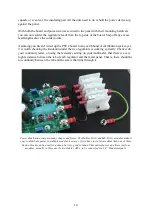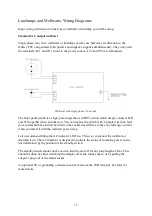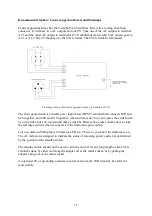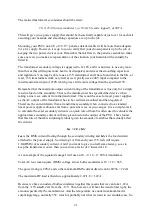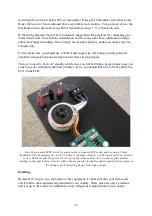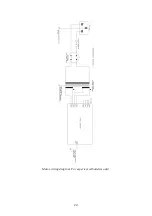
resistance which reduces any unwanted voltage drops as return currents travel through the
wiring.
This can be done in a variety of ways but one useful and simple method involves having a
4mm banana socket mounted near each power supply. The banana socket is then connected to
0V, using either the 0VA or 0VB screw terminal on the PSU2 board. Use at least 24/0.2 wire
to make this connection.
If both the power supplies have a banana socket then it is a simple matter of patching the two
modular cases together with a banana patch lead. The great thing about bananas is that they
are stackable so it's easy even if you have more than two cases to connect up.
I recommend that you use thick multistrand cable to make your grounding leads and that you
use good quality 4mm banana sockets and plugs like the type sold for speaker connections and
not those used for cheap test equipment.
A single M4 crimped ring terminal secured to a panel bonding point. A solder tag with a 4mm hole could
also be used but for thicker wires, like this 24/0.2 wire, crimping offers better performance and is simpler.
To reduce electrical noise it is wise to ground the panel on which the power supply is
mounted. To make a 0V bonding point is straightforward. Simply drill a 4mm hole in your
panel. Scrape back around the hole any finish on the inside surface, such as paint or anodising,
to reveal the shiny metal underneath. Fit an M4 screw from the front and pop on a toothed
shakeproof washer and flat washer on the rear. Fit your ring terminal (or terminals) onto the
screw, place another flat washer and shakeproof washer on top of that. Secure tightly with an
M4 nut. This should ensure that the panel is robustly connected to 0V.
18

